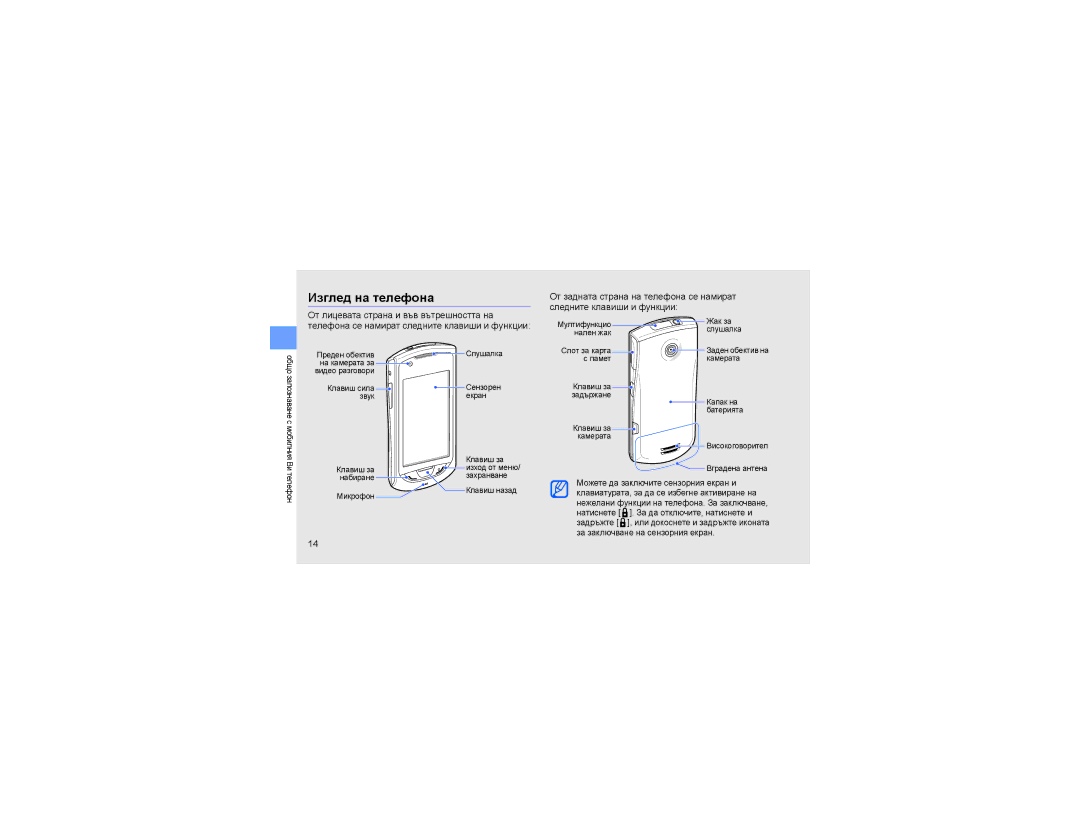GT-S5620KOABGL, GT-S5620TIAGBL, GT-S5620PIAGBL, GT-S5620TIRGBL, GT-S5620DKAGBL specifications
The Samsung GT-S5620 series, comprising models GT-S5620KOAGBL, GT-S5620DAAGBL, GT-S5620CWAGBL, GT-S5620DAAMTL, and GT-S5620DKAMTL, marked a significant step for Samsung in the mid-range smartphone market when they were launched. These devices, released around 2010, encapsulated a blend of essential features catering to a diverse user base while maintaining affordability.At the heart of the GT-S5620 series is a vibrant 3.2-inch touchscreen display that offers a resolution of 240 x 400 pixels. This size provided an adequate screen space for browsing, texting, and viewing media, making it user-friendly for individuals venturing into smartphone technology. Additionally, the capacitive nature of the display enhanced touch sensitivity, delivering a smoother experience than resistive screens prevalent during that era.
In terms of performance, the GT-S5620 models were powered by a 600 MHz processor, capable of handling basic smartphone tasks, social media applications, and light gaming. They came equipped with a 3-megapixel rear camera, enabling users to capture moments with decent image quality. The camera featured several modes, including autofocus and various scene modes, allowing for versatility in photography.
Connectivity was another hallmark of the GT-S5620 series. With support for 3G networks, users could enjoy faster internet browsing and media streaming. Additionally, the inclusion of Wi-Fi ensured that users stayed connected wherever Wi-Fi hotspots were available. Bluetooth technology facilitated easy sharing of files and media with other compatible devices, which was essential in an increasingly connected world.
The series also ran on the proprietary TouchWiz interface, providing a customized user experience with widgets and shortcuts. The operating system was based on the older Java platform, which, while limiting in terms of apps compared to modern standards, allowed for basic application usage tailored to the device's capabilities.
Storage options included 50 MB of internal memory, expandable via microSD cards, which was crucial for users looking to store photos, music, and other files. The battery life was commendable, with a removable 1200 mAh battery supporting extended use throughout the day.
Overall, the Samsung GT-S5620 series represented a balance of essential features, practical technology, and stylish design, making it an attractive option for users seeking value in their mobile experience. It laid the groundwork for Samsung's evolution in the smartphone market, setting the stage for future innovations.

